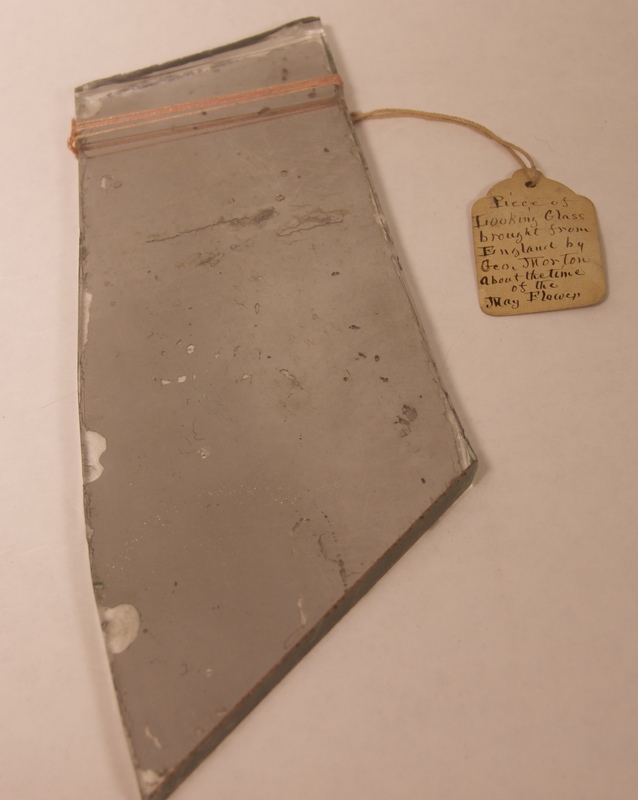Introduction
This rectangular shard of a mirror looks unassuming and the scratches and worn marks on its surface make it appear as something you would find broken on the street or in a junkyard. The metal on the underside of the glass that gives the mirror its reflectivity has started to flake away. This metallic coat gives away it’s age as most mirrors made after the 1850s are instead coated with silver using electroplating (Castro, 2013). The edges of the glass are well worn and not as sharp, showing that this shard has been broken off for many years. The small hand-written note on a small yellowed tag tied with red string around the breadth of the glass notes that it is a piece of a looking glass. The term “looking glass” immediately conveys the history of this object: it isn’t referred to as what modern viewers would call a mirror, instead “looking glass” was much more popularized and proper in the 19th century. This piece of a looking glass was one of the items that Henry Sheldon had in his collection during the 19th century.
